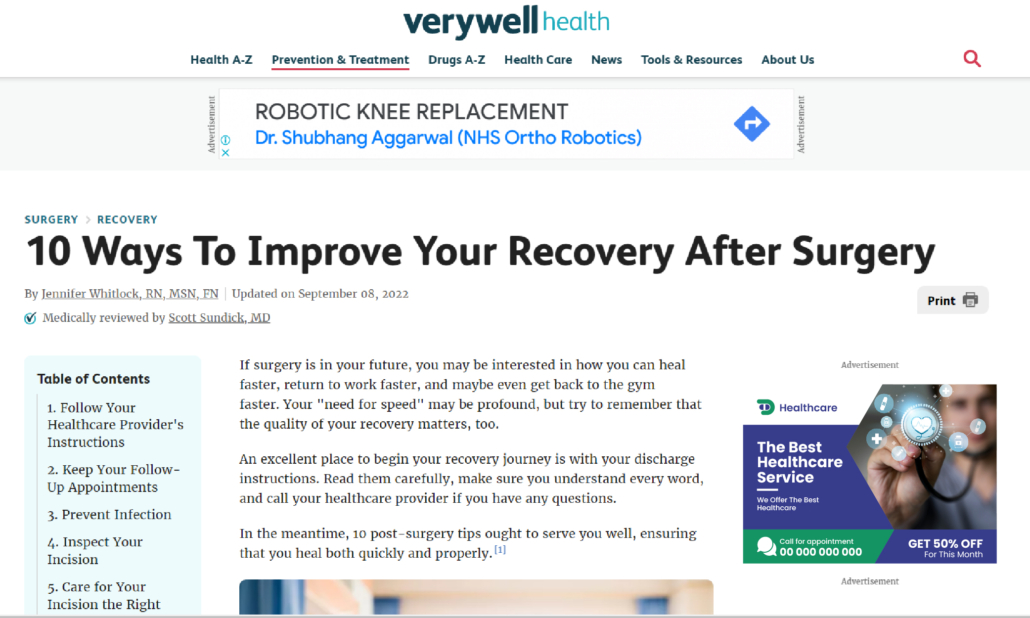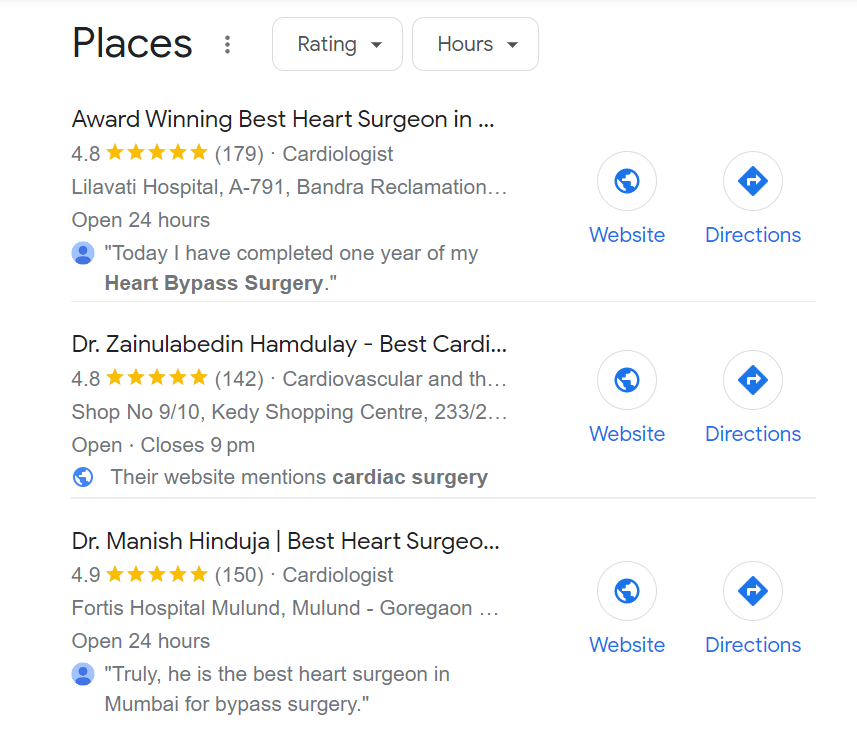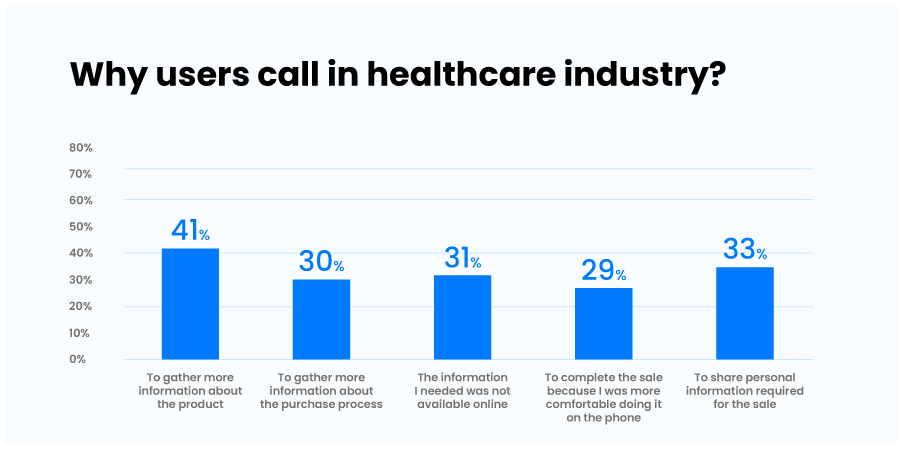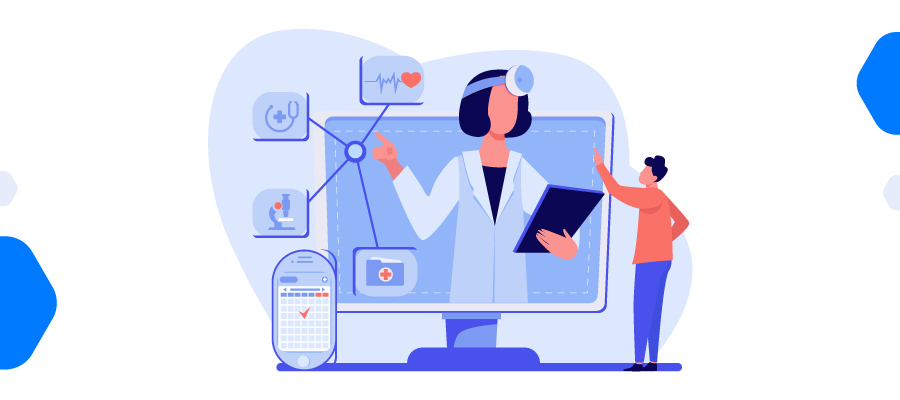Healthcare is a $2.5 trillion industry in the U.S. and it contributes to more than 10% of the GDP of most developed countries. As the demand for quality healthcare increases, businesses in healthcare can feel the competition and are looking for ways to stand apart. By implementing the right healthcare marketing strategies, smaller healthcare providers have the opportunity to compete with bigger organizations at a fraction of the cost.
Digitization in healthcare has levelled the playing field for smaller healthcare providers to some extent.
But at the same time, patients are also more informed today. With the internet, they can easily research different providers and check out their reviews which gives them an option to compare and choose, instead of sticking to the same healthcare provider for years.
Thus, it is important for healthcare organizations to stand out and differentiate themselves from their competitors.
In this article, we’ll discuss some unique healthcare marketing strategies that can help you achieve this!
First, let’s understand what marketing in healthcare means.
Marketing in Healthcare Industry
Healthcare marketing is the process of promoting and selling healthcare products or services. The target audience in healthcare can be your patients, healthcare professionals, and other stakeholders.
Healthcare businesses invest in marketing to improve patient intake, satisfaction, and revenue for the organization. Let’s understand the other ways in which healthcare marketing benefits businesses.
Importance of Healthcare Marketing
The competition is increasing, and so are the options available.
Marketing can help you stand out and communicate your unique value to patients. It also allows you to highlight your specialties and expertise.
With the right marketing strategies in place, you can achieve the following:
- Improved patient satisfaction: Patient satisfaction is a common indicator to measure the quality of healthcare at an organization. Patients take online reviews or feedback as a direct indicator for the quality of care at your organization.
- Patient Acquisition: Healthcare marketing is crucial for attracting patients, growing your practice, and generating revenue.
- Providing the right information: The Internet has given patients easy access to a lot of information. Unfortunately, the information is not always correct. Spread of misinformation is a concern. Marketing can help you educate your potential patients, and you can ensure they consume the right information.
- Improved brand visibility and awareness: Marketing helps you increase awareness and visibility for your brand. Consistent marketing also improves retention and re-call value for your brand.
Let’s get into the healthcare marketing tactics that bring positive changes to businesses.
Top Healthcare Marketing Practices
1. Create a Solid Online Presence
5% of all the Google searches are related directly or indirectly to healthcare.
Your website is the central aspect of your digital marketing strategy and its key to building an online presence.
A high-ranking website includes all the basic information about your hospital/organization like different specializations, treatment options, doctors, and facilities. Improve the content, design, and navigation to provide a smooth experience. Remember, your potential patients should be able to find the information within a few clicks. Optimize your website for mobile devices as well.
Nowadays, a website is not the only channel to gain information. People also go through your social media handles. Create a social media profile with relevant information and content to build trust with your potential patients. We will get to this later in the article.
2. PPC
In 2021, for the first time ever in healthcare, the digital ads spend was more than traditional TV ads.
Digital marketing is very popular in healthcare because you can precisely target your audience and get instant results. Monitoring and calculating ROI easier, as compared to traditional marketing channels.
PPC is an effective digital marketing strategy, as it allows you to target specific audiences and track the effectiveness of your ads in real-time.
There are several ways that you can use PPC for marketing:
Google Ads: You can create and run PPC campaigns on Google Ads, using ads and by bidding on specific keywords. When a user searches for one of the targeted keywords, the ad may appear at the top or bottom of the search results page.
Social media advertising: Many social media platforms, such as Facebook, Instagram, and LinkedIn, offer PPC advertising options. You can create ads and target specific audiences based on factors such as location, age, interests, and behaviors.
Display advertising: You can also use PPC to display ads on websites and apps related to health and fitness to reach your potential audience. These ads may appear as banners or interstitial ads and can be targeted to specific audiences based on factors such as demographics and interests.

3. Online Reputation Management
Your organization’s online reputation can significantly impact the number and quality of patients you attract.
- 88%, consider online reviews to be just as important as recommendations from friends and family.
- 71% of individuals seeking medical treatment take reviews into consideration when choosing a provider.
Patients can tell you how much they love what you did and how great that they feel and then they’ll tell their friends, but we’re all Google people.
Dr. Asia Payne, Clinical Director, Trinity Rehab
Now you may ask, “How do I manage my online reviews?”
One of the easiest ways to improve online reviews is to simply ask patients for them. This can be done through email or in-person requests.
Once a patient has added a review, it is equally important for you to respond to them. Both positive and negative reviews should be acknowledged in a timely manner. This shows that you value their feedback and are willing to address any concerns they may have.
One way to collect patient feedback is using patient satisfaction surveys. These surveys can be administered in-person, over the phone, or online. The survey should ask patients to rate their overall experience and provide comments on specific aspects of care, such as communication with staff, wait times, and cleanliness of the facility.
The most effective way to improve online reviews is by providing excellent patient care. This includes being attentive, responsive, and caring, as well as ensuring that patients receive high-quality medical treatment.
Improving patient experience isn’t as simple as it sounds, but we have a guide to help your healthcare business: How to Improve Patient Experience in 7 Easy Steps
4. Search Engine Optimization
If your healthcare business aims to increase visibility and generate traffic for your website, the solution is SEO!
Research shows that search drives 3x more visitors to hospital sites. Optimize your website for specific keywords related to your services or treatments to rank high. This will attract potential patients to the website and increase visibility and credibility.
Here are a few best practices in SEO for healthcare marketing:
- Keyword research: Identify and target specific keywords or phrases that patients are searching for. This will improve your organization’s visibility in search engine results. You can use tools like SEMrush for keyword research.
- On-page optimization: Optimize your website for the targeted keywords. Use the keywords in the page titles, headings, and body content, to improve rankings in search results.
- Off-page optimization: Build high-quality backlinks from other reputable websites. This also helps in improving the website’s ranking in search results. You can do so by collaborating with brands with reputed websites.
- Local SEO: Optimize for local keywords. Include accurate and complete information about the organization’s location and contact details. This will help to improve the organization’s visibility in local search results. You can start by creating a business profile on Google and list your healthcare organization on Google places. Include all the basic information like timings and accurate address, which are required to book an appointment.

5. Leverage Content Marketing
Creating and sharing valuable, relevant, and consistent content is a way to communicate and educate your patients. Content helps patients make informed decisions. It creates awareness about your healthcare facility and treatments and, most importantly, builds trust.
There are several ways you can leverage content marketing:
- Blog posts: A healthcare blog is great for sharing educational and informative content. This can include information about your health conditions and treatments or tips to maintain good health. You can also include answers to commonly asked health questions.
- Social media posts: Social media platforms, such as Facebook, Instagram, and Twitter, can be an excellent way to share content. Create relevant content and engage with potential patients. This can include sharing informative articles, tips for maintaining good health, and many more.
- eBooks and white papers: You can create eBooks or white papers that delve into more detailed and technical information. This content can be useful for healthcare professionals and patients who want to learn more about a particular condition or treatment . The eBooks also increase
svisibility for your brand and helps you acquire new patients
- Videos: You can create educational videos about specific health topics. You can also create videos that showcase information about your services and treatments. (Include this in the social media bit, it is not standing apart here)
6. Install Chat Bots
Patients clearly want to communicate with their healthcare providers online.
According to research, the US market for healthcare chatbots will expand enormously by 2025.
While you can’t take phone calls 24×7, you can answer the basic questions most new patients ask, around the clock with a chatbot.
It is also a great medium to collect patient details or guide them through the website and help in scheduling appointments.
Chatbots not only meet the needs of patients but can give your operation an immense productivity boost.
7. Experiment with Influencer Marketing
Nowadays, people trust influencers more than their close friends. Creating relevant content with influencers and posting on the right platform can help you build brand awareness.
Patients turn to social media to share their healthcare journey because it’s personal and emotional. It helps them share their experience, connect with support groups, and learn more about the condition and treatments available.
When an influencer shares a healthcare journey, it creates an emotional connection. This makes it more likely that an influencer’s followers will trust them when they recommend products or services.
Of course, you must be more careful and ensure your influencer does not give direct medical advice and follows federal guidelines. It is advised to work with only trusted influencers who will stick to your guidelines.
8. Leverage Phone Calls for Booking More Appointments
88% of patients prefer to schedule their healthcare appointments over call. Patients who research online prefer to speak to a real human being before booking appointments. That’s why it is wise to include your phone number in all digital ads.

Now, we understand a healthcare inquiry can come at any time, and it may not be possible to have someone available 24/7 to address them.
To overcome this, invest in a hosted PBX with IVR (interactive voice menu). It provides patients with essential information to book an appointment. A digital receptionist can take bookings around the clock without human involvement.
9. Use the Power of Automation.
Marketing automation can be a game changer for you. You can automate repetitive tasks, reduce human error, and achieve better results.
You can focus on more strategic tasks, such as campaign planning and designing or KPI measurements.
There are several types of automation for different marketing channels:
- Creating templates for communication.
Ready-to-use templates will save time and help you reduce response time as well. You can always keep improvising depending on the feedback and responses you receive. We have a few resources to help you out:
1. 25 Ready-to-use Healthcare Email Templates for Your Practice
2. 10 Ready-to-use SMS Templates for Healthcare
- Automate inquiry distribution.
Once your marketing campaigns start delivering results, you will have a lot of inquiries coming into your system. To get the best results, it is important to address them in real time. Automating the lead distribution process based on your team’s roster, will help you
- Automate report generation.
Using smart tools to generate easy-to-read reports can save a lot of manual effort. It will also help you drive better insights and make faster decisions.
10. Track and Analyze your Marketing Campaigns Regularly
Now that we’ve looked at a few marketing strategies, one question you should be asking is…
“How do to identify what is effective and where does room for development exist?”
You can get your answer by monitoring your marketing statistics and tracking your efforts.
The most effective healthcare marketing is data-driven. Knowing what is working and attributing success and failure are the two essentials for improvement.
Investing in analytical tools like Google Analytics and Google Search Console are good places to start. But, if you want to take your marketing strategy to the next level, all you need is a complete marketing automation platform.
Challenges in Healthcare Marketing
Marketing for healthcare can be trickier as compared to other industries for several reasons.
First, the healthcare industry is heavily regulated. There are strict rules and guidelines to protect patient privacy and to ensure that healthcare providers accurately represent their services. This can make promoting healthcare services and facilities challenging. HIPAA compliance, for example, is essential for healthcare businesses.
Second, the healthcare industry is complex and constantly evolving. For instance, COVID gave a push to digitization, and we saw a boost in online consultations. Another example is the rise of eHospitals, where everything, from booking consultations to receiving prescriptions and reports, is digitized. It can be difficult to keep up with the latest trends and technologies. Thus, it becomes a challenge to develop effective marketing strategies and messages.
Third, the healthcare industry involves sensitive and personal information. Patients may be hesitant to share personal details with healthcare providers. One reason is the lack of trust between the patient and the healthcare provider. Making it difficult for providers to reach and communicate with their target audiences.
Yet, by careful planning and execution of your strategies, you can achieve your marketing goals.
You can Include a healthcare CRM in your marketing strategies for better execution and analysis of your marketing campaigns. It helps you keep track of all your patient’s information in one place, so you can easily reach out to them with personalized messages.
Plus, it makes it easy to measure the success of your marketing campaigns, so you can keep doing more of what works and less of what doesn’t.
How LeadSquared helped Practo, increase call center efficiency by 60%
Leadsquared has helped many healthcare organizations to streamline their marketing efforts. One such use case is Practo.
Practo runs many marketing campaigns. And as a result, they get many phone calls for appointment booking. They also have an outbound calling team. Initially, they had set up workflows to manage all the incoming inquiries from different marketing channels. Practo needed a tool to declutter their existing process and help with reporting. Finally, they decided to implement Leadsquared.
Key results:
- 60% increase in call center efficiency
- Reduced turn-around time
- Improved reporting
- Reduced decision-making time
| Sales and marketing Goals | Leadsquared Solutions | Results |
| Improve call center process and manage complete patient journey | Automated lead distribution to increase efficiency | 60% Increase in call center efficiency |
| Improve reporting | Custom reports and in-depth dashboards | Reduced Decision making time |
| Reduce response time on inquiries | Smart views to intercept incoming request quickly | Drop in TAT |
This has been the best decision we have made. We have already saved 6-8 months’ worth of development cost and effort. Our daily call center efficiency per agent has increased by 60%. We are also able to measure everything, much better.
Siddhartha Nihalani, Co-founder, Practo
You can read the complete story here: Practo
Conclusion
Healthcare marketing poses unique challenges. Marketers have to walk a fine line between getting the word out and making the patients feel at ease. I hope these strategies help you to streamline your marketing efforts and get your desired results.
If you’re looking for end-to-end healthcare CRM software to capture inquiries, communicate with patients, measure campaign performance, and more, check out LeadSquared HIPAA-compliant Healthcare CRM







